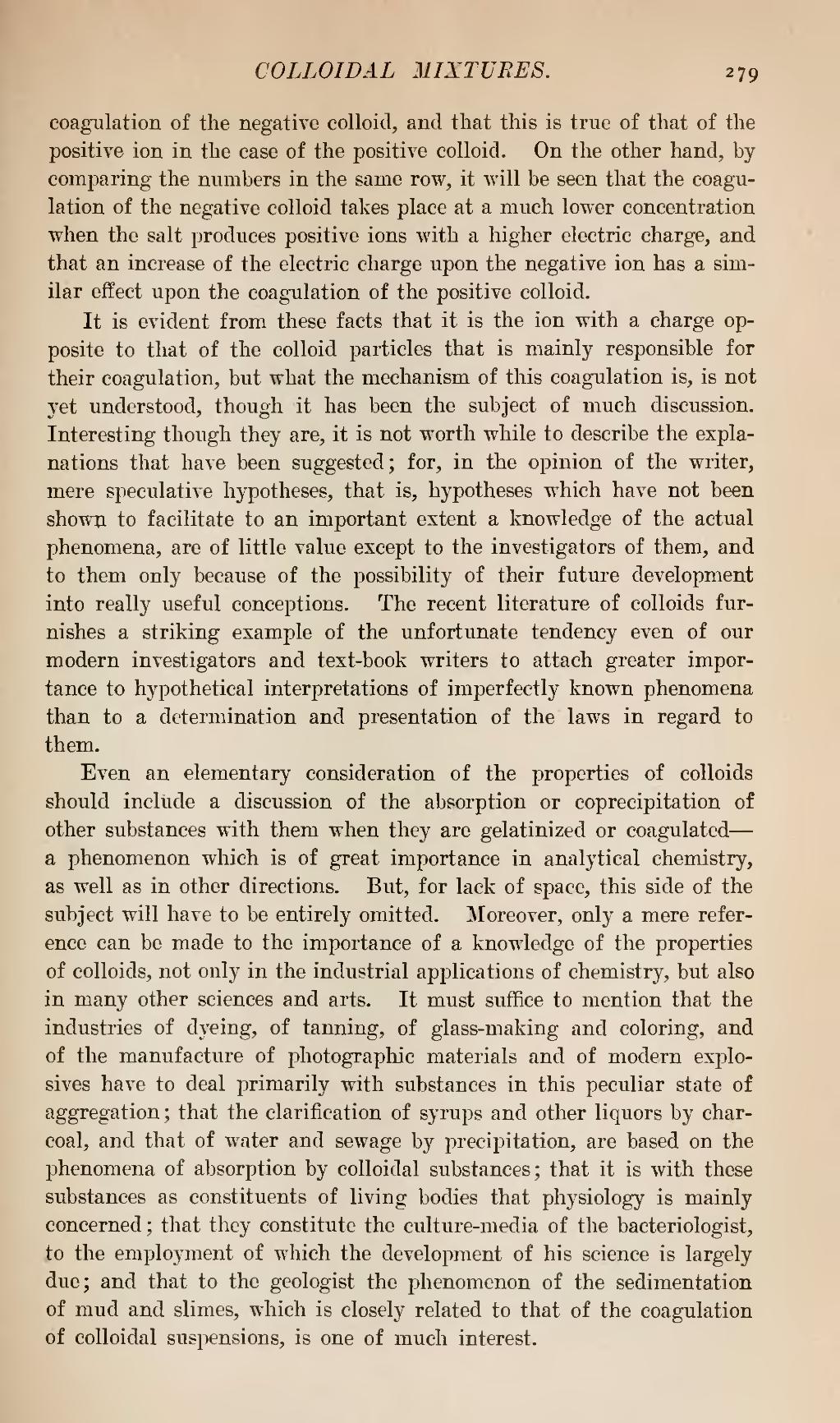coagulation of the negative colloid, and that this is true of that of the positive ion in the case of the positive colloid. On the other hand, by comparing the numbers in the same row, it will be seen that the coagulation of the negative colloid takes place at a much lower concentration when the salt produces positive ions with a higher electric charge, and that an increase of the electric charge upon the negative ion has a similar effect upon the coagulation of the positive colloid.
It is evident from these facts that it is the ion with a charge opposite to that of the colloid particles that is mainly responsible for their coagulation, but what the mechanism of this coagulation is, is not yet understood, though it has been the subject of much discussion. Interesting though they are, it is not worth while to describe the explanations that have been suggested; for, in the opinion of the writer, mere speculative hypotheses, that is, hypotheses which have not been shown to facilitate to an important extent a knowledge of the actual phenomena, are of little value except to the investigators of them, and to them only because of the possibility of their future development into really useful conceptions. The recent literature of colloids furnishes a striking example of the unfortunate tendency even of our modern investigators and text-book writers to attach greater importance to hypothetical interpretations of imperfectly known phenomena than to a determination and presentation of the laws in regard to them.
Even an elementary consideration of the properties of colloids should include a discussion of the absorption or coprecipitation of other substances with them when they are gelatinized or coagulated—a phenomenon which is of great importance in analytical chemistry, as well as in other directions. But, for lack of space, this side of the subject will have to be entirely omitted. Moreover, only a mere reference can be made to the importance of a knowledge of the properties of colloids, not only in the industrial applications of chemistry, but also in many other sciences and arts. It must suffice to mention that the industries of dyeing, of tanning, of glass-making and coloring, and of the manufacture of photographic materials and of modern explosives have to deal primarily with substances in this peculiar state of aggregation; that the clarification of syrups and other liquors by charcoal, and that of water and sewage by precipitation, are based on the phenomena of absorption by colloidal substances; that it is with these substances as constituents of living bodies that physiology is mainly concerned; that they constitute the culture-media of the bacteriologist, to the employment of which the development of his science is largely due; and that to the geologist the phenomenon of the sedimentation of mud and slimes, which is closely related to that of the coagulation of colloidal suspensions, is one of much interest.
